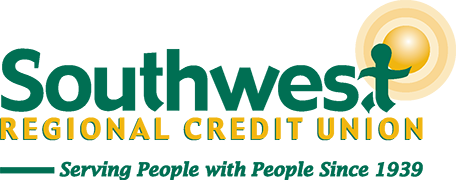
RESP
RESP – Registered Education Savings Plan
The RESP was introduced by the Government of Canada as a way for Canadians to save and grow their money to fund their child’s post-secondary education.
Opening an RESP
- An RESP is a registered account that can be opened for a beneficiary by a subscriber.
- The beneficiary must be a Canadian resident with a valid social insurance number (SIN).
- A beneficiary can have more than one RESP at any given time, but contributions will need to carefully be tracked as the lifetime contribution limit is per person, not per plan.
- If there are joint subscribers, they must be spouses or common partners of one another. A subscriber has no limit to the number of RESP plans they can establish.
- There are two primary types of RESPs:
- Single Plan
- The subscriber of a single plan RESP can name only one beneficiary.
- The beneficiary can be any age when the RESP plan is opened.
- The beneficiary could be a child, grandchild, relative, yourself, another adult, etc.
- The subscriber could be a parent, grandparent, relative, friend, etc.
- The subscriber can replace a beneficiary provided the new beneficiary is under the age of 21 and is a sibling of the original beneficiary.
- Family Plan
- The subscriber of a family plan RESP can name one or more beneficiaries.
- Each beneficiary must be related to the subscriber by blood or adoption, so they must be a child, grandchild, or sibling of the Subscriber.
- All RESP account beneficiaries must be siblings, and must be under the age of 21 when added to the plan.
- Funds do not have to be shared equally among the beneficiaries.
- Provides more flexibility when withdrawing funds.
- Single Plan
Contributions
- Any amount can be contributed to an RESP up to the maximum lifetime contribution limit of $50,000 per beneficiary. This amount does not include any grant or bond funds received from the Government of Canada.
- Canada Revenue Agency may require you to pay a tax of 1% per month on contributions that exceed your RESP contribution limit.
- Contributions can be made until the end of the 31st year after the RESP plan was first opened, unless the beneficiary is disabled in which case contributions can be made for a maximum of 35 years.
- In the case of a family plan, contributions must stop on the 31st birthday of each beneficiary, or 31 years after the year the plan was opened.
- The subscriber continues to own funds contributed to the RESP, and these funds can be returned to the subscriber, or paid to the beneficiary for post-secondary education.
- When the beneficiary is 16 or 17 years old, contributions of at least $2,000 before the year the child turns 16, or contributions of at least $100 per year in any four years before the year the child turns 16 are required in order to receive the CESG.
- Contributions to an RESP are not deductible on the Subscriber’s income tax return.
- Interest earned on the RESP is tax-deferred.
- Contributions can be invested in term deposits, savings account, or mutual funds.*
- Eligible deposits in registered accounts have unlimited coverage through the Financial Services Regulatory Authority (FSRA).
Canada Education Savings Grant (CESG)
- Any eligible RESP beneficiary under age 18 qualifies for the CESG.
- The first $2,500 contributed annually to the RESP is matched by the government at a rate of 20% to a maximum of $500 per beneficiary per year as a Basic CESG.
- There is a lifetime maximum of $7,200 per beneficiary up to age 18.
- Contributing less than $2,500 annually to the RESP will not qualify for the maximum $500 CESG, but the unused entitlement can be carried forward to the next year.
- Additional CESG provides a grant on the first $500 contribution per beneficiary per year provided the family has applied to Canada Revenue Agency for the Canada Child Benefit (CCB) and has filed an income tax return annually.
- Any eligible Additional CESG room does not carry-forward to future years.
- When the beneficiary is age 16 or 17, there are special eligibility requirements to qualify for the CESG.
- The CESG must be returned to the federal government when the plan is terminated, the subscriber withdraws contributions before the beneficiary attends post-secondary education, none of the beneficiaries pursue post-secondary education, etc.
Canada Learning Bond (CLB)
- Children under age 18 may qualify for the CLB provided their net family income is equal to or less than the income tax threshold adjusted annually by the federal government.
- The government provides an initial $500 CLB, and then a CLB of $100 annually until age 15 provided the child’s family continues to meet the income threshold.
- No contributions are required in order to qualify for the CLB.
- The maximum CLB is $2,000 per child.
- CLBs are payable to a specific beneficiary.
- Beneficiaries age 18 to 21 can open an RESP and apply to receive up to $2,000 CLB if an RESP plan was never opened on their behalf.
- The CLB must be returned to the federal government if the subscriber withdraws all contributions and closes the RESP plan before the beneficiary attends post-secondary education.
Withdrawals
- The RESP can remain open until the end of the 35th year after the plan was opened, unless the beneficiary is disabled in which case the RESP can remain open until the end of the 40th year after the plan was opened.
- Funds in the plan should be used before the RESP expires.
- Withdrawals used for education:
- Funds in the RESP account can be paid to the student/beneficiary as an Educational Assistance Payment (EAP) once proof of enrollment has been provided showing they are enrolled in a qualifying post-secondary education or training program.
- Educational Assistance Payments (EAPs) include income earned, Canada Education Savings Grant, Canada Learning Bond.
- The student/beneficiary must claim payments as income on their tax return.
- Contributions to the RESP belong to the subscriber. The subscriber can either choose to keep the money, or pay to the beneficiary as a Post-Secondary Educational (PSE) withdrawal which is tax-free.
- Withdrawals not used for education:
- The contributions are returned to subscriber and can be withdrawn tax-free.
- Any CESG remaining in the plan must be repaid to a maximum amount equal to 20% of the withdrawal.
- The CLB is repaid to the federal government.
Beneficiary Doesn’t Pursue Post-Secondary Education
- For a single plan RESP, you may be able to name an alternate beneficiary.
- For a family plan RESP, contributions and CESG can be used by the remaining beneficiaries for their post-secondary education.
- If any grants, bonds or other government incentives paid to the RESP are not able to be transferred to an alternate beneficiary, the funds may need to be returned to the government excluding any interest earned on this money.
- The initial contribution can be withdrawn by the subscriber with no tax consequences.
- When the beneficiary reaches age 21 and the plan is at least 10 years old, earnings withdrawn will be subject to withholding tax and a 20% penalty tax unless the funds are transferred to an RRSP. Withdrawn amounts will be considered taxable income.
* Mutual funds and other securities are offered through Aviso Wealth, a division of Aviso Financial Inc. Unless otherwise stated, mutual funds, other securities and cash balances are not covered by the Canada Deposit Insurance Corporation or by any other government deposit insurer that insures deposits in credit unions.
Contact your branch to learn more about registered education savings plans.
Financial Specialists are available in every branch to help you select the product best suited to meet your financial goals.



